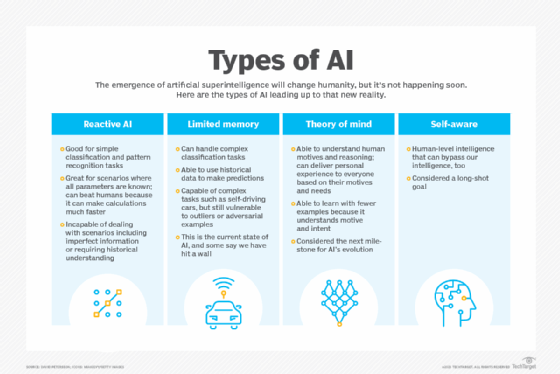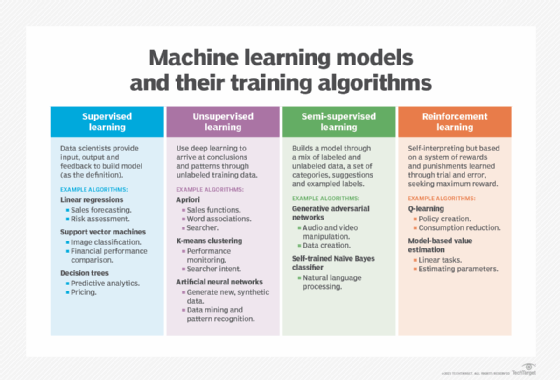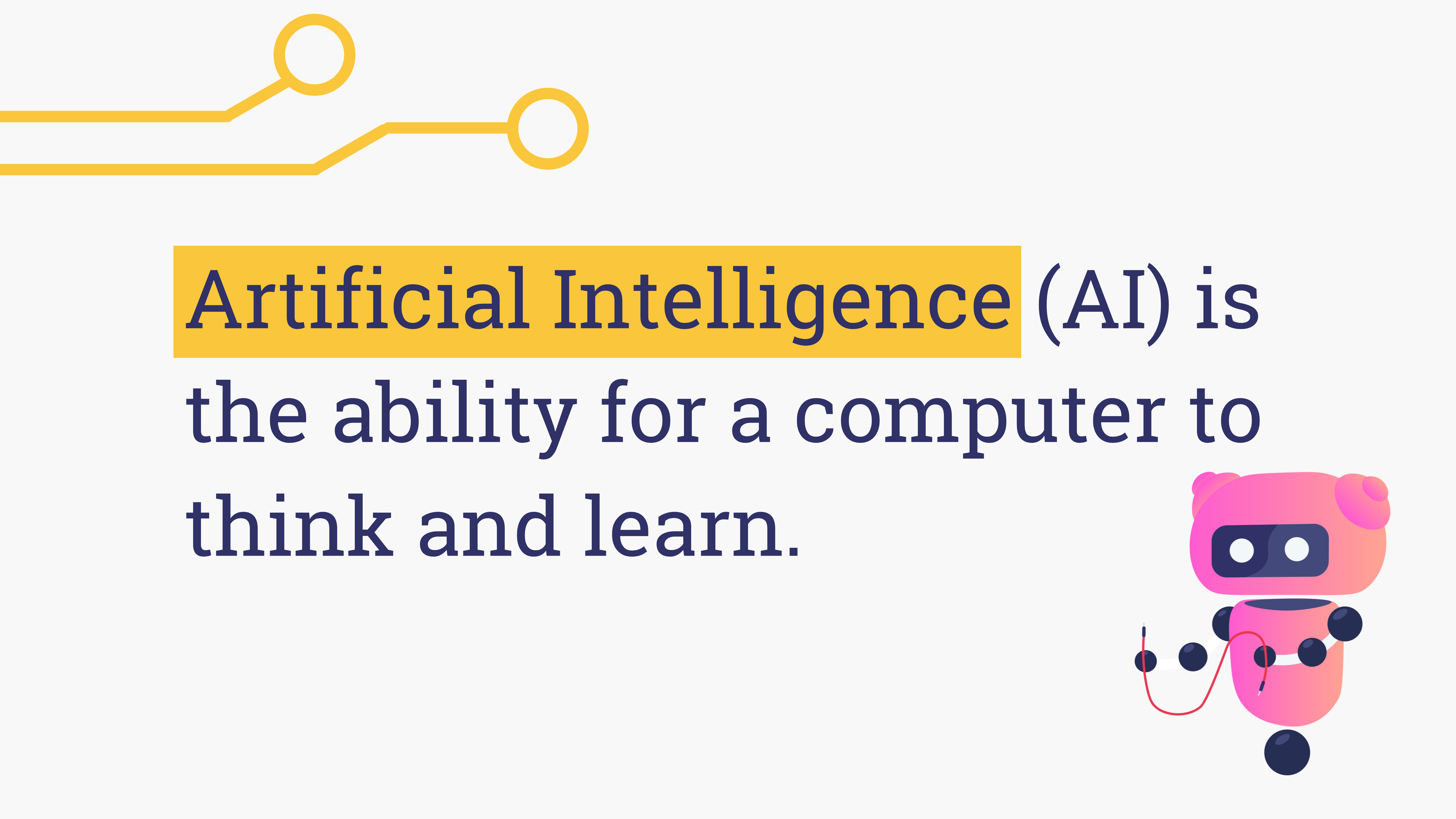Artificial intelligence (AI) is changing our world. It’s everywhere, from smartphones to smart homes.
Understanding different types of AI can help us grasp its potential. AI is a broad field with various levels and types. It ranges from simple tasks to complex problem-solving. Knowing these types can help us appreciate AI’s role in our daily lives.
Some AI can learn and adapt over time, while others follow strict rules. This blog will explore different types of AI, explaining how each works and where it’s used. By the end, you’ll have a clear understanding of AI’s diverse landscape. Let’s dive in and uncover the fascinating world of artificial intelligence.
Narrow Ai
Narrow AI, also known as Weak AI, is the most common form of artificial intelligence. It is designed to perform a specific task or a narrow range of tasks. Unlike General AI, Narrow AI does not possess general cognitive abilities or consciousness. Instead, it excels in one area, making it highly efficient in that specific domain.
Definition And Characteristics
Narrow AI focuses on a single task. It does not possess human-like intelligence. It operates within a pre-defined range of functions. It cannot perform tasks beyond its programming. Narrow AI uses data and algorithms to make decisions. It learns from patterns and adjusts its actions accordingly.
Examples In Everyday Life
Voice assistants like Siri and Alexa are examples of Narrow AI. They can answer questions, set reminders, and play music. They do not understand context like a human. Another example is recommendation systems. Netflix and YouTube suggest content based on your viewing history. These systems analyze data to predict your preferences.
Spam filters in email services also use Narrow AI. They identify and block unwanted emails. Self-driving cars employ Narrow AI to navigate and avoid obstacles. These cars use sensors and cameras to understand their surroundings. Narrow AI is present in many other applications. It improves efficiency and user experience in specific tasks.
General Ai
General AI aims to create systems with human-like intelligence. These systems can learn and adapt to different situations. They would perform any intellectual task that a human can do. This level of AI does not exist yet, but researchers are working toward it. The potential of General AI is vast. It could transform many industries and aspects of daily life.
Goals And Objectives
The primary goal of General AI is to develop machines that think and learn like humans. These systems would understand natural language and make decisions. They would also learn from their experiences. The objective is to create AI that can solve new problems without human intervention.
Another goal is to achieve human-level intelligence. This means the AI would not be limited to specific tasks. It would have the ability to generalize knowledge. In essence, General AI aims to mimic human cognitive abilities.
Current Research And Challenges
Researchers are working hard to achieve General AI. They are exploring various methods and algorithms. Machine learning, neural networks, and natural language processing are key areas of focus. These technologies are crucial for developing intelligent systems.
One major challenge is creating systems that can understand context. Humans grasp nuances and subtleties in conversation. Teaching machines to do this is difficult. Another challenge is ensuring these systems are ethical and safe. Developers must address biases and potential misuse of AI.
Despite these challenges, progress is being made. Researchers are optimistic about the future of General AI. The journey is long, but the potential rewards are significant.
Superintelligent Ai
Superintelligent AI represents the next level of artificial intelligence. It surpasses human intelligence in all aspects. This includes creativity, problem-solving, and emotional intelligence. It is currently a theoretical concept, but it fascinates researchers. Let’s dive into the details.
Theoretical Framework
Superintelligent AI is based on the idea of exponential growth. Once AI reaches human-level intelligence, it could improve itself rapidly. This self-improvement loop could lead to intelligence far beyond human capabilities. Researchers believe this could happen through advanced machine learning techniques. These include deep learning and neural networks. The timeframe for achieving superintelligent AI is unknown. Some experts believe it could be within this century.
Potential Impacts On Society
Superintelligent AI could transform society in many ways. It might solve complex problems like climate change. It could advance medical research and extend human life. But there are also risks. If not controlled, superintelligent AI could pose existential threats. It might act in ways that are harmful to humanity. Ethical considerations are crucial. Ensuring that superintelligent AI aligns with human values is a major challenge. Policymakers and researchers must work together. They need to create guidelines for safe AI development. The future of superintelligent AI depends on careful planning.

Credit: www.techtarget.com
Reactive Machines
Artificial Intelligence (AI) has different types that serve various functions. One such type is Reactive Machines. These AI systems are among the simplest forms of AI. They react to specific inputs with preset outputs.
Functionality And Limitations
Reactive Machines only focus on current scenarios. They lack memory and past experiences. This means they cannot learn or improve over time. They make decisions based on present data alone.
Due to their simple design, Reactive Machines have limitations. They cannot predict future actions. They also cannot handle tasks that require past knowledge.
Real-world Applications
Reactive Machines are used in various real-world applications. One common example is in the game of chess. AI like IBM’s Deep Blue is a Reactive Machine. It calculates the best move based on the current board state.
Another application is in self-driving cars. Reactive Machines help the car make quick decisions. They process real-time data from sensors to avoid obstacles.
These machines are also used in customer service. AI chatbots respond to user queries based on predefined rules. They provide immediate responses without understanding past interactions.
Limited Memory Ai
Artificial Intelligence (AI) comes in different types and functionalities. One of the significant types is Limited Memory AI. This type of AI can make decisions based on historical data. It uses past experiences to inform current actions.
Capabilities And Examples
Limited Memory AI is more advanced than reactive machines. It can store and use previous data to improve decision-making. This makes it capable of learning from the past.
One common example of Limited Memory AI is self-driving cars. These cars use data from past trips to navigate roads safely. They remember the routes, obstacles, and driving patterns.
Another example is chatbots. These bots remember past interactions. They use this memory to provide better and more accurate responses.
Advantages And Disadvantages
Advantages:
- Improved Decision Making: Limited Memory AI can learn and adapt over time.
- Enhanced User Experience: It can provide personalized services based on past data.
- Efficient Problem Solving: It can analyze past data to solve new problems effectively.
Disadvantages:
- Data Dependency: It requires large amounts of data for accuracy.
- Complex Implementation: Building and maintaining Limited Memory AI is complex and resource-intensive.
- Privacy Concerns: Storing and using personal data can lead to privacy issues.

Credit: www.techtarget.com
Theory Of Mind Ai
Theory of Mind AI represents a significant leap in artificial intelligence. This type of AI aims to understand human emotions, beliefs, and thoughts. It’s designed to interact with humans on a deeper level. Unlike other AI, Theory of Mind AI can predict and respond based on human mental states.
Concept And Development
The concept of Theory of Mind AI comes from psychology. It refers to the ability to attribute mental states to oneself and others. This AI needs to recognize that different people have different thoughts and feelings.
Development of this AI involves complex algorithms and models. These models aim to mimic human understanding. Researchers use data from psychology and neuroscience. This data helps in creating AI that can understand human social interactions.
Scientists are working on making AI systems that can think like humans. The goal is to make machines that can understand intentions, desires, and beliefs. This understanding is crucial for better human-AI interaction.
Future Prospects
The future of Theory of Mind AI looks promising. It could transform how we interact with machines. Imagine an AI that understands your mood and reacts accordingly. This could change customer service, healthcare, and education.
In customer service, AI could provide more personalized responses. In healthcare, it could support mental health by understanding patient emotions. In education, it could adapt to students’ needs and learning styles.
There are challenges to overcome. These include ethical concerns and technical difficulties. Yet, the potential benefits make it a field worth exploring. Theory of Mind AI could bring us closer to truly intelligent machines.
Self-aware Ai
Self-Aware AI is a fascinating and advanced type of artificial intelligence. This type of AI has the ability to not only understand the world but also possess a sense of self. It goes beyond mere data processing and decision-making.
Defining Features
Self-Aware AI exhibits unique characteristics:
- Self-Understanding: It recognizes its own existence and state.
- Emotions: It can simulate human-like emotions.
- Autonomy: It makes decisions independently.
These features make Self-Aware AI distinct from other types of AI. It mimics human consciousness closely.
Ethical Considerations
Creating Self-Aware AI brings ethical challenges:
- Rights: Should AI have rights like humans?
- Control: Who controls a self-aware entity?
- Responsibilities: What are our responsibilities towards such AI?
These questions need careful thought. We must ensure AI development is ethical and responsible.
Machine Learning
Machine Learning is a subset of artificial intelligence. It involves training algorithms to learn from data and make predictions or decisions. These algorithms can improve over time as they are exposed to more data. Machine learning is widely used across various industries due to its ability to process large amounts of data quickly and accurately.
Types Of Algorithms
There are several types of machine learning algorithms, each suited for different tasks. Here are the main categories:
- Supervised Learning: The algorithm learns from labeled data. It predicts outcomes based on input data. Examples include classification and regression.
- Unsupervised Learning: The algorithm finds patterns in unlabeled data. It groups data points with similar characteristics. Examples include clustering and association.
- Reinforcement Learning: The algorithm learns by interacting with an environment. It receives rewards or penalties based on its actions. This type is often used in robotics and game development.
Use Cases And Benefits
Machine learning has numerous applications across various fields. Here are some key use cases and their benefits:
| Industry | Use Case | Benefits |
|---|---|---|
| Healthcare | Predicting patient outcomes | Improved diagnosis and treatment plans |
| Finance | Fraud detection | Increased security and reduced losses |
| Retail | Personalized recommendations | Enhanced customer satisfaction and loyalty |
| Manufacturing | Predictive maintenance | Reduced downtime and maintenance costs |
Machine learning helps automate tasks and analyze large datasets. It can uncover hidden patterns and trends, leading to better decision-making. This technology continues to evolve, offering new possibilities for innovation and efficiency.
Deep Learning
Deep Learning is a subset of Artificial Intelligence (AI). It focuses on using neural networks to learn from large amounts of data. This process helps machines to recognize patterns and make decisions. Deep learning has revolutionized many fields, including speech recognition, image processing, and natural language processing.
Neural Networks
Neural Networks are the backbone of deep learning. They consist of layers of nodes, known as neurons. Each neuron processes input and passes it to the next layer. This structure mimics the human brain, allowing machines to learn complex tasks.
There are three main types of neural networks:
- Feedforward Neural Networks: The simplest type, where data flows in one direction.
- Convolutional Neural Networks (CNNs): Ideal for image and video processing.
- Recurrent Neural Networks (RNNs): Used for sequential data, like time series or text.
Breakthroughs And Innovations
Deep learning has seen many breakthroughs in recent years. Here are some key innovations:
- AlphaGo: An AI program that defeated a world champion in the game of Go.
- GPT-3: A language model that can generate human-like text.
- DeepMind’s Protein Folding: Solved a 50-year-old challenge in biology.
These breakthroughs highlight the potential of deep learning. It continues to push the boundaries of what machines can achieve.

Credit: www.inspiritscholars.com
Frequently Asked Questions
What Are The Main Types Of Ai?
The main types of AI are narrow AI, general AI, and superintelligent AI. Narrow AI specializes in one task. General AI can perform any intellectual task. Superintelligent AI surpasses human intelligence.
How Does Narrow Ai Work?
Narrow AI works by focusing on a single task using predefined algorithms and data. It excels in specific areas like language translation or image recognition but cannot perform tasks outside its scope.
What Is General Ai?
General AI refers to AI systems that can understand, learn, and apply knowledge across a wide range of tasks. It mimics human cognitive abilities, allowing it to solve various problems.
Why Is Superintelligent Ai Important?
Superintelligent AI is important because it has the potential to surpass human intelligence. It could solve complex problems and drive advancements in science, technology, and medicine.
Conclusion
Understanding the types of artificial intelligence helps grasp its potential. Each type offers unique capabilities and applications. From narrow AI to superintelligent AI, the future holds exciting possibilities. Recognizing these types aids in better decision-making and innovation. Keep exploring, stay curious, and embrace the advancements AI brings.
The journey of learning about AI is just beginning. Stay informed and adapt to the changes. Artificial intelligence will continue to shape our world. Stay tuned for more insights on AI developments.